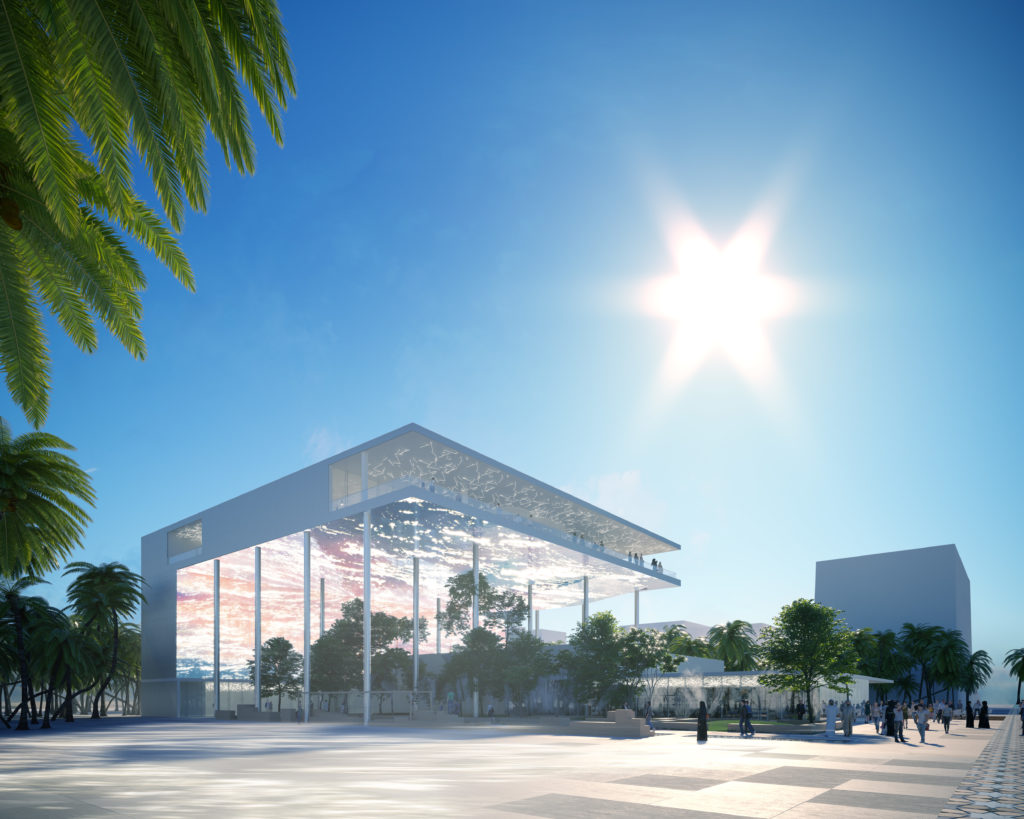Designed by the Atelier du Prado Architectes and Celnikier & Grabli, the French Pavilion has light as one of the key inspirations. Directly linked to the flow of visitors as well as the surrounding environment such as the weather and temporality, the French Pavilion’s scenography offers as many visits as there are visitors.
Visitor’s will initially be attracted by the building’s exterior design and its lights. Inside, there will be an exhibition of France’s mobility solutions as the pavilion is located in the Mobility District. To better immerse visitor’s in a journey of French culture, there will be a space for boutiques and tasting French cuisine.
Outside, the roof and rear facade of the building are covered in a layer of colorful solar panels based on an impressionist palette reminiscent of Monet’s Water Lilies. An approach that forms part of the Materials/Light theme developed by the Pavilion. Each solar panel will evoke a stoke of paint reflecting the French sky in Dubai.
With sustainability and France’s ecological ambition in mind, the Pavilion has the ability to be dismantled and reused in the future for anything ranging from a museum to an educational center. Thought and designed as virtuous, it will be deployed according to the 3 pillars of bio-climatism: renewable, clean and controlled energy, sustainable materials and a circular economy at work.
The requirements of the expo bureau (BIE) and Expo 2020’s goal of having the most sustainable exhibition ever posed a challenge in the design and construction process. “Clearly we put the emphasis on the Pavilion’s “second life” after Expo 2020. Our pavilion is easy to reuse and embodies the fantastic history of universal exhibitions, as well as recollections from Dubai 2020. We’re looking at all possible options in that respect”, said Erik Linquier, Commissioner general of the Pavilion France and President of the Compagnie française des expositions (COFREX).

